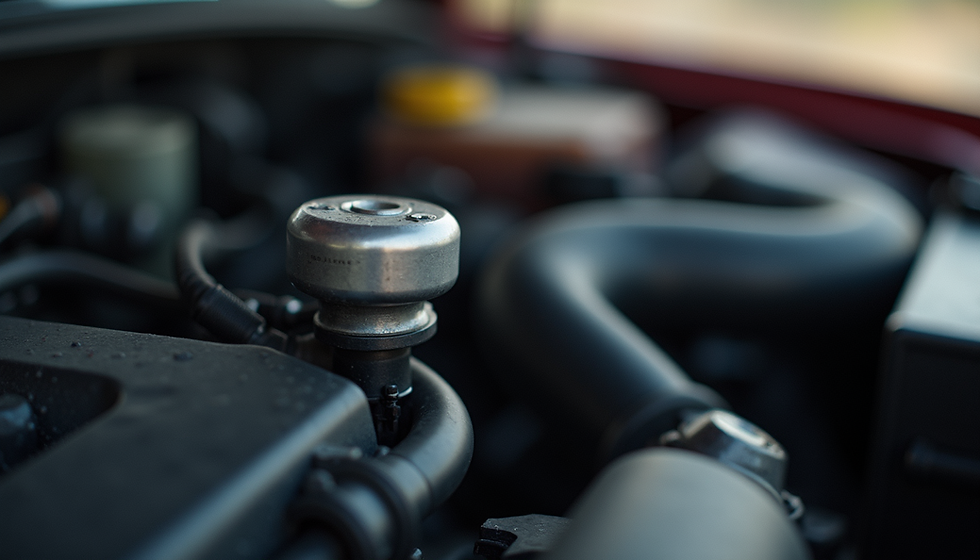Car battery explain
- Autolast Ghana

- Apr 13, 2022
- 3 min read
Updated: Apr 28, 2022
At the point when you have a weak battery, your vehicle winds up putting extra weight on sound parts. The charging system, starter motor, or starter solenoid can be impacted.
A vehicle battery is an illustration of a wet cell battery, with six cells. Every cell of a lead stockpiling battery comprises substitute plates made of a lead combination matrix loaded up with wipe lead (cathode plates) or covered with lead dioxide (anode). Every cell is loaded up with a sulfuric corrosive arrangement, which is the electrolyte. At first, cells each had a filler cap, through which the electrolyte level could be seen and which permitted water to be added to the cell. The filler cap had a little vent opening which permitted hydrogen gas created during charging to escape from the phone.

A few vehicles utilize other starter batteries. For weight investment funds, Some have a lithium-particle battery as a choice all Kia Niro ordinary crossovers highlight one also. Weighty vehicles might have two batteries in series for a 24 V framework or may have series-equal gatherings of batteries providing 24 V.
However, even with the restricted part of the battery's ability that can be utilized for impetus, numerous automakers suggest that you don't consistently charge higher than a demonstrated 80 to 90 percent. That can assist with broadening the battery's duration and fight off the corruption of its ability after some time.
Your vehicle's electrical framework is a fundamental part of getting you from direct A toward point B. Peruse on to figure out how your starter, alternator, and battery cooperate.

Gas blasts can happen at the negative cathode where hydrogen gas can develop because of hindered battery vents or an ineffectively ventilated setting, joined with a start source. Blasts during the motor turnover up are ordinarily connected with eroded or messy battery posts. The following most normal situations were while chipping away at link associations, while kicking off, regularly neglecting to interface with the dead battery before the charging source and neglecting to associate with the vehicle frame as opposed to straightforwardly to the grounded battery post, and keeping in mind that actually taking a look at liquid levels. Near 66% of those harmed experienced substance consumption, and almost three-fourths endured eye wounds, among other potential wounds.
The power and life span of a battery are noted by its Amp Hour (Ah) rating. Essentially, this signifies how long a battery will endure on the off chance that it isn't re-energized. For instance, assuming that a battery is evaluated as, say 8Ah, giving 4 amps to 2 hours will be capable. Assuming a battery is evaluated as 100Ah, it will deliver 100 Amps for 60 minutes. This doesn't be guaranteed to mean a battery will endure just a single hour since it will most recent 2 hours assuming it's approached to deliver just 50 Amps, 4 hours at 25 Amps, etc. Figure out how to test and charge a vehicle's battery. Batteries are additionally evaluated by their Cold Cranking Amps (CCA), which indicates the power they need to start the motor and kick it off in a chilly climate. Therefore it merits observing these two figures since there's little point in having an unfathomably strong battery to drive a 1.0-liter hatchback, while simultaneously a diesel motor will require a lot higher CCA rating than that 1.0 petroleum motor. Different circumstances and conditions can make your vehicle's battery become low or released. In winter the motor is more enthusiastically to turn over in any case, in addition to the way that frameworks like the ventilation, warmed back window, and (assuming your vehicle has them) warmed seats, are all in more regular use.
It pays to carport your vehicle in the event that you would be able to utilize a charger to provide your battery with several hours' of top-up charge every month. Additionally, ensure you switch off the warmed seats and windows whenever they've gone about their responsibilities since, supposing that they're completely turned on when you turn on the start they can in a flash exhaust your battery to the point that it hasn't sufficient ability to turn over the motor. Winter will in general be when individuals in all actuality do bunches of short excursions in an unfortunate climate, and that implies the battery seldom has an opportunity to recuperate the charge it has utilized getting the vehicle moving and demisted. That is the reason it's smart to take your vehicle for a somewhat longer excursion (say 10 miles or thereabouts) when seven days just to allow the battery a genuinely necessary opportunity to re-energize.




Comments